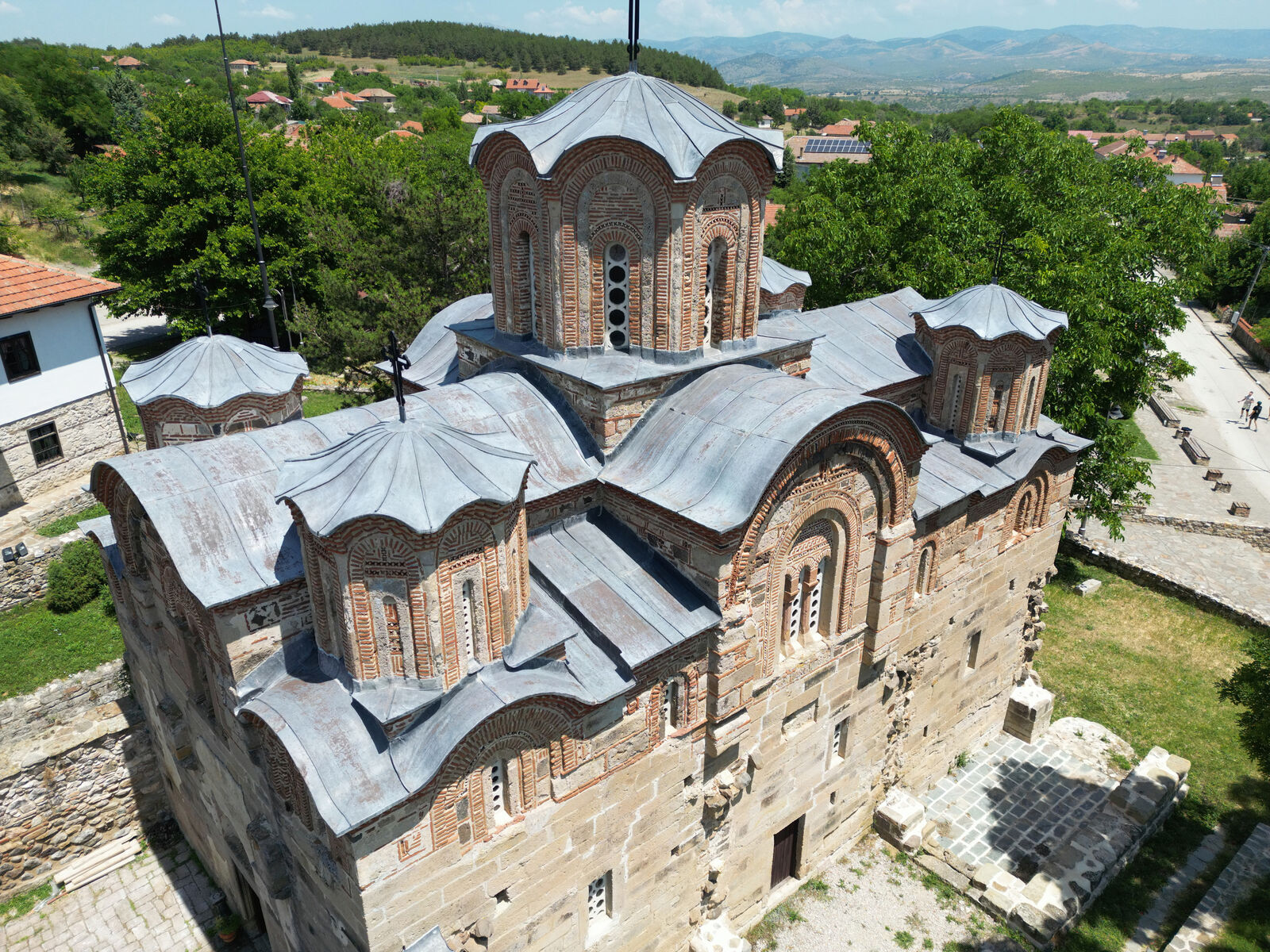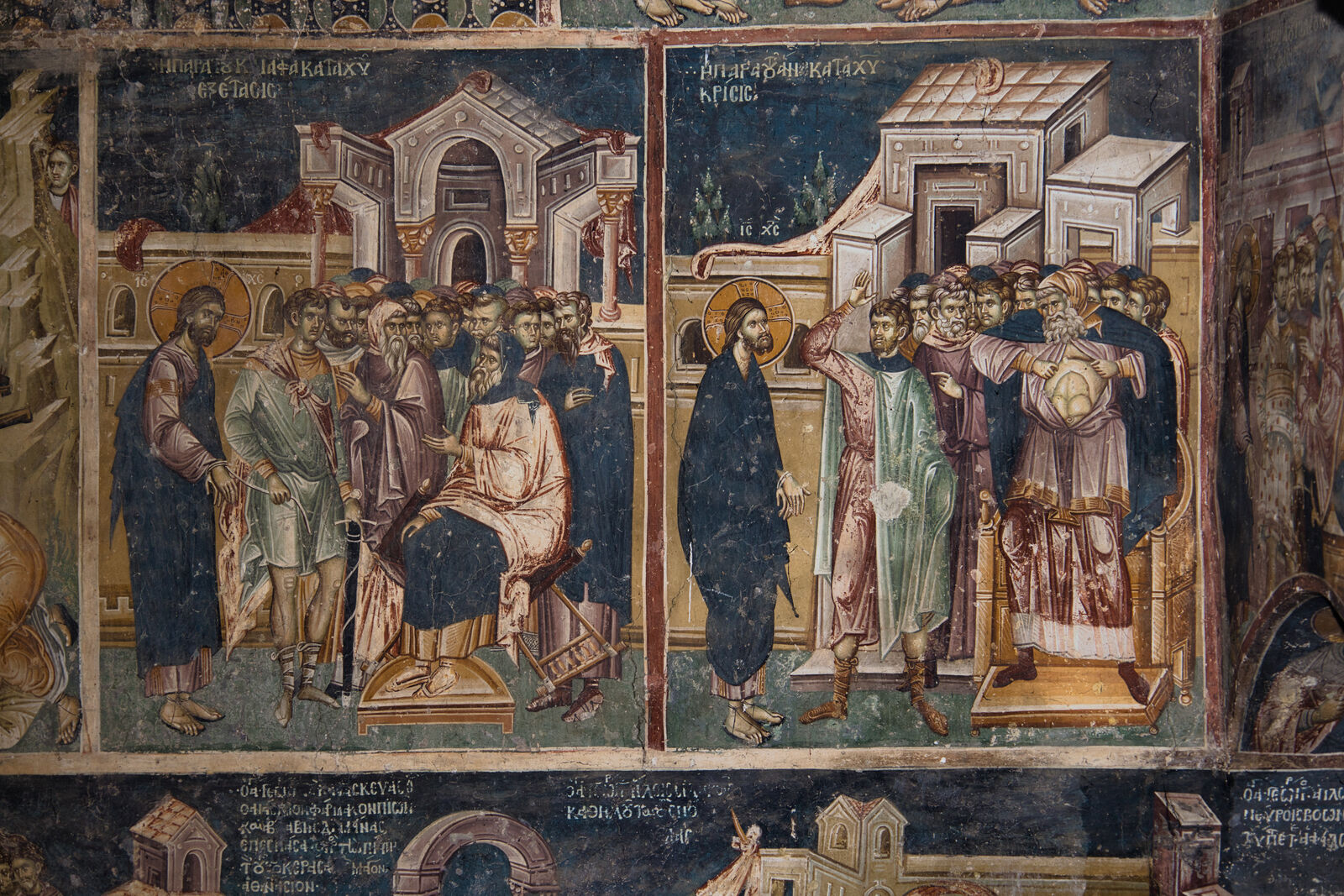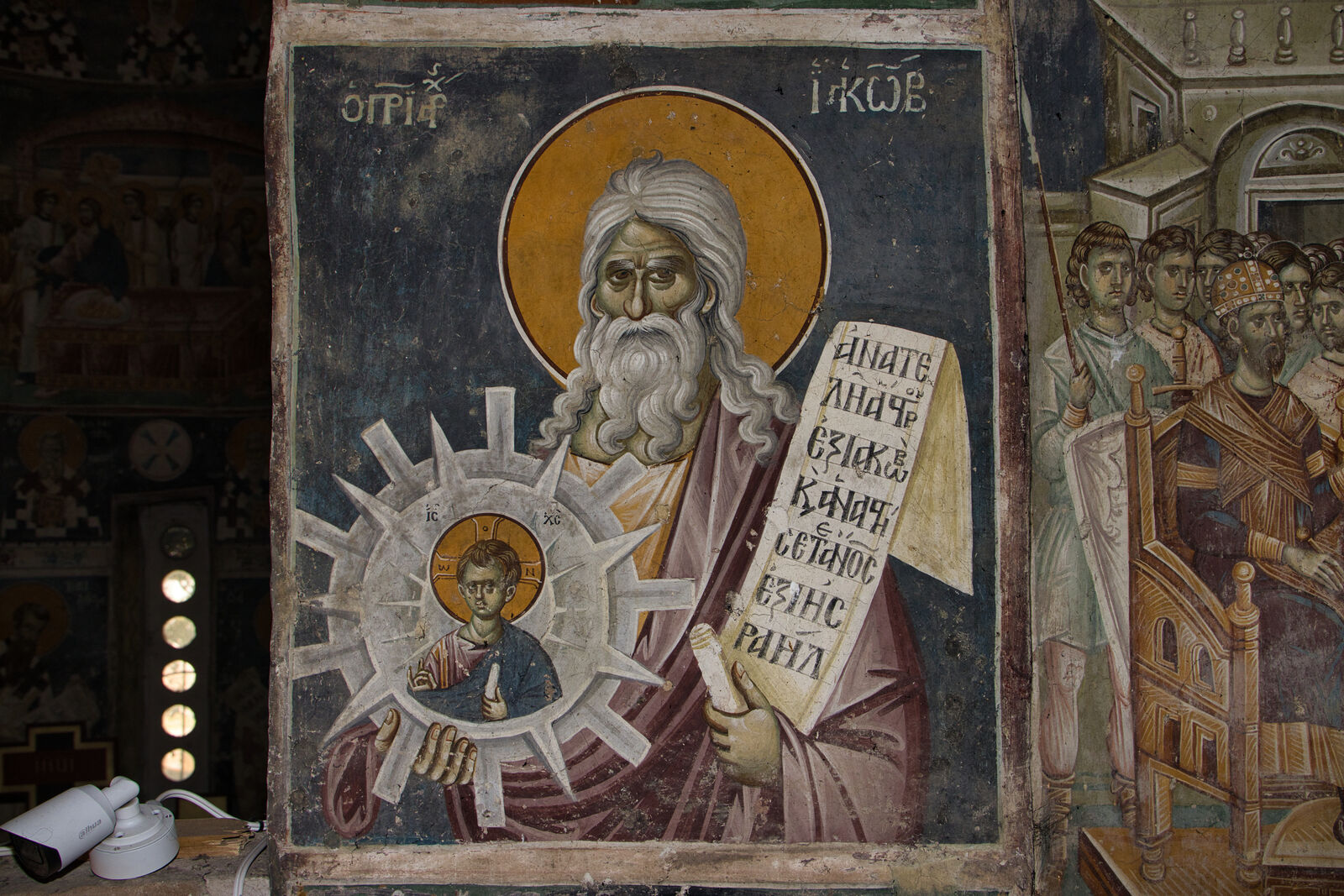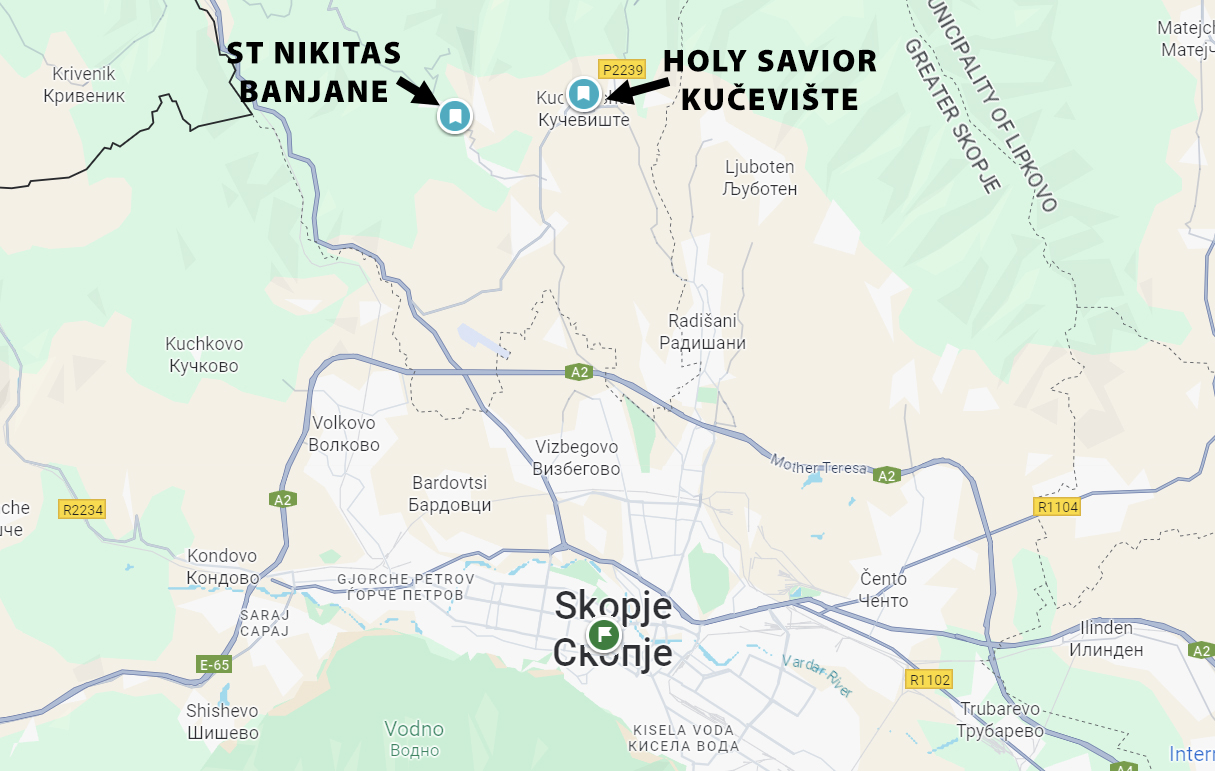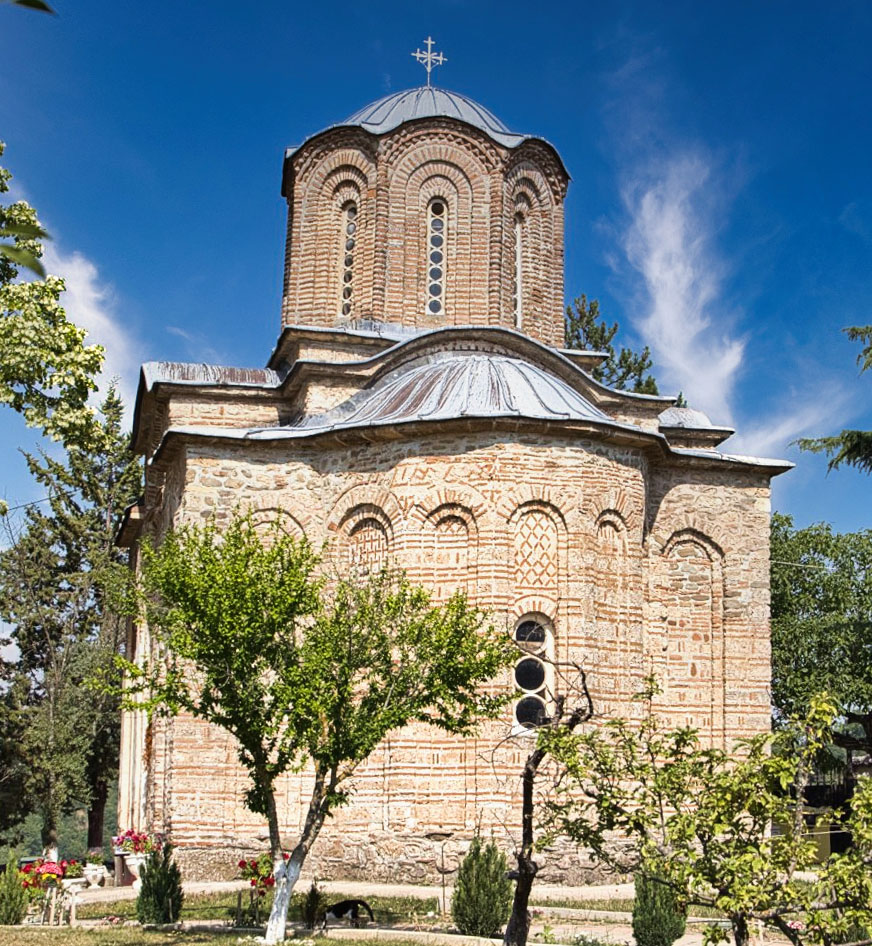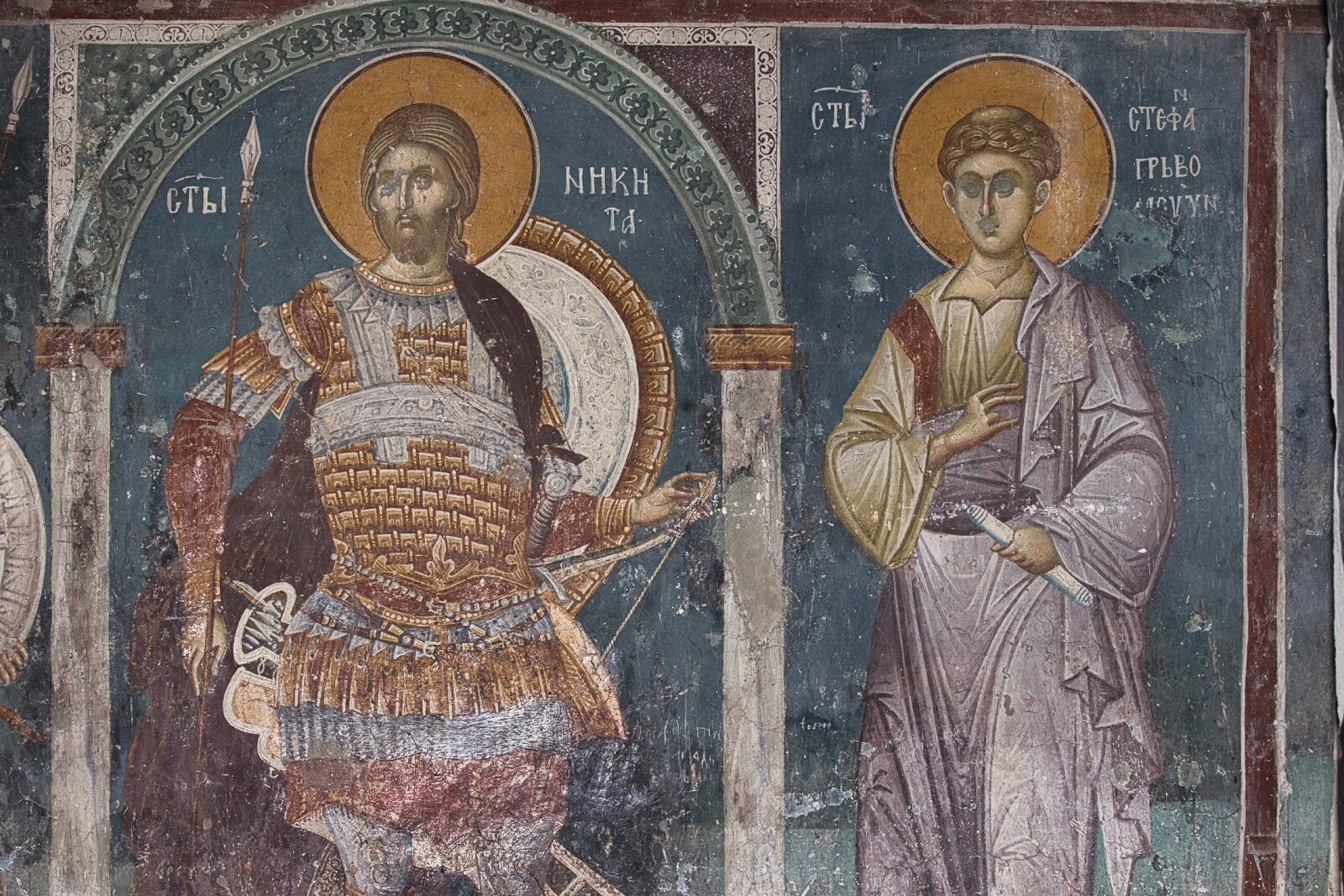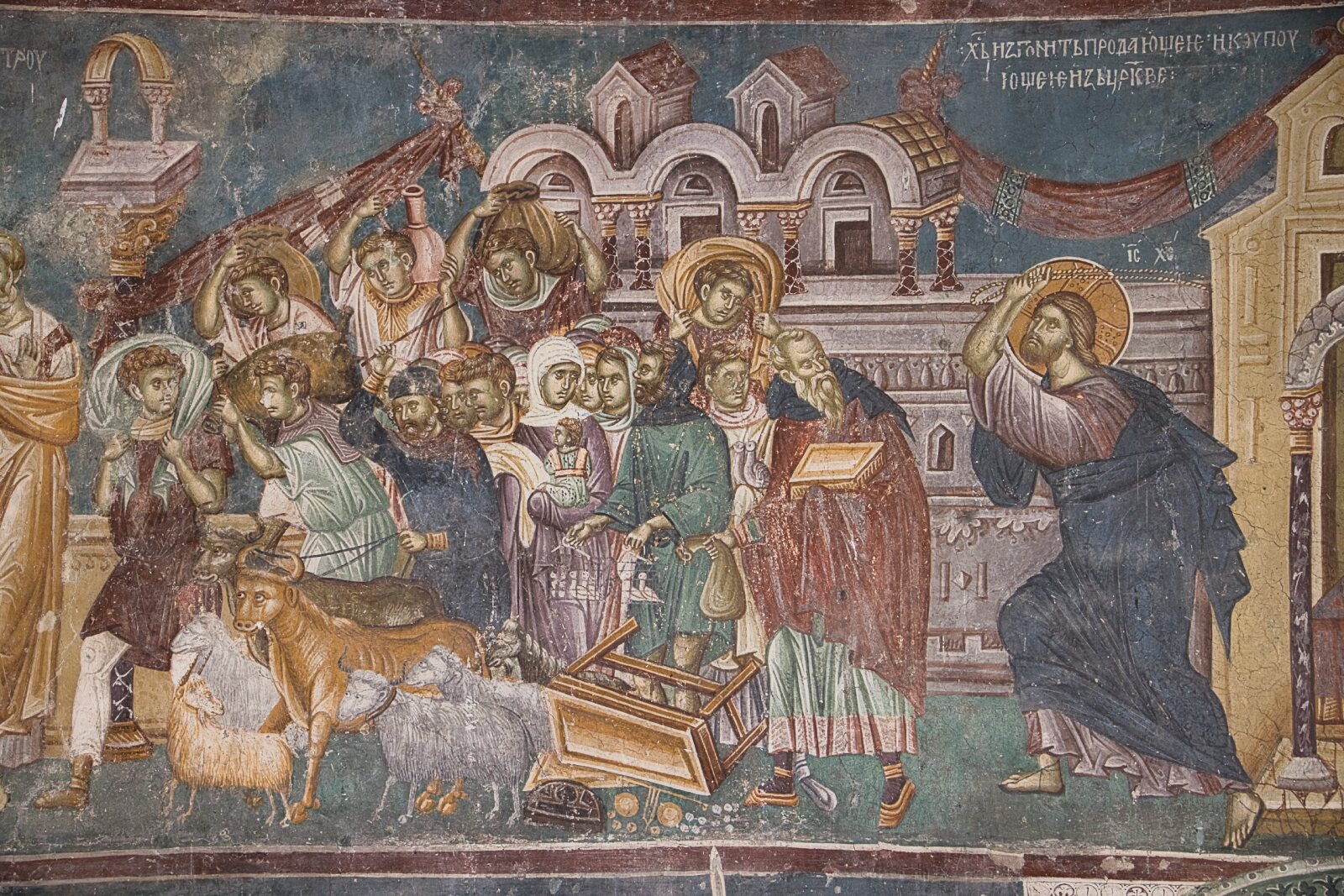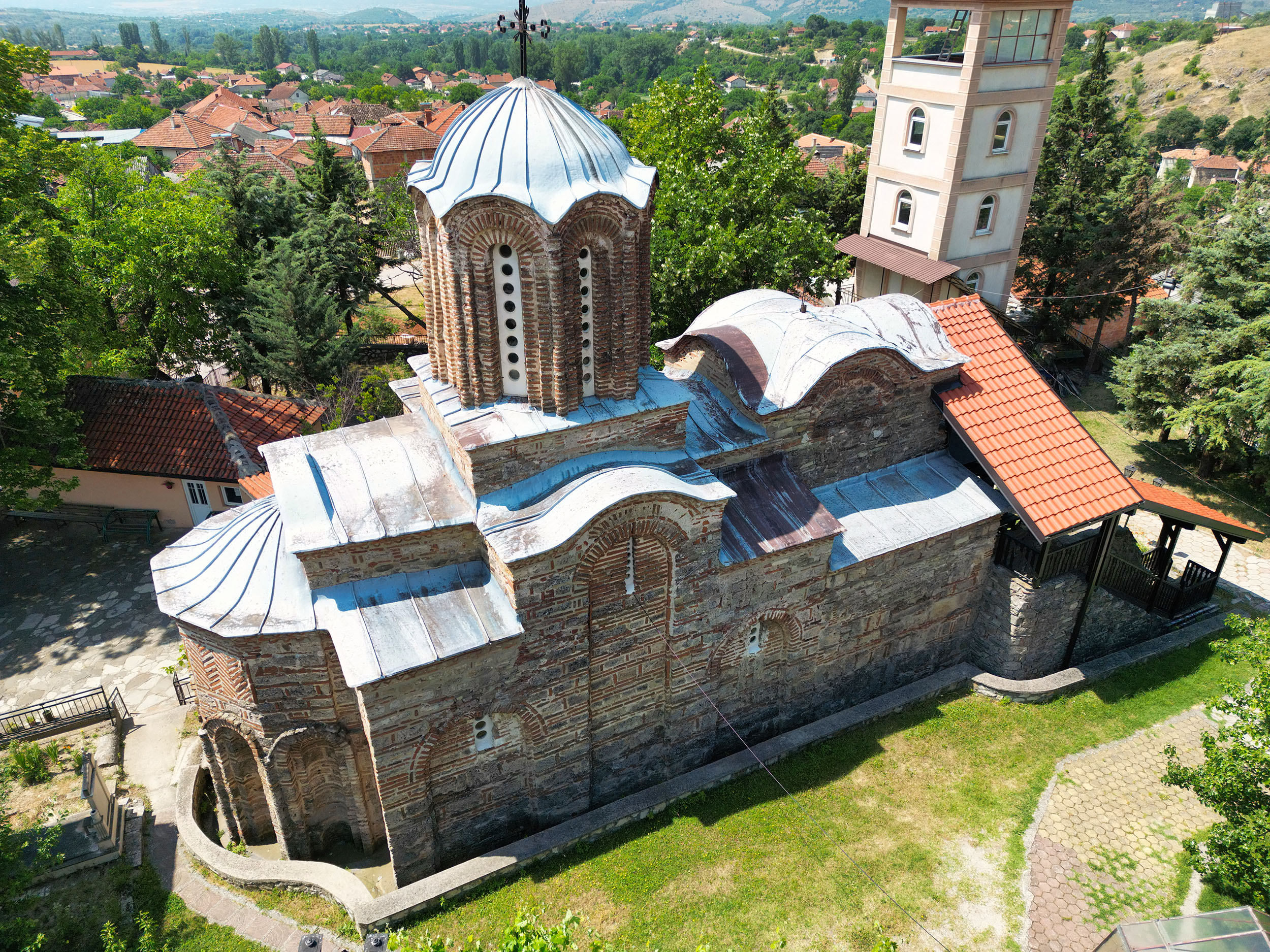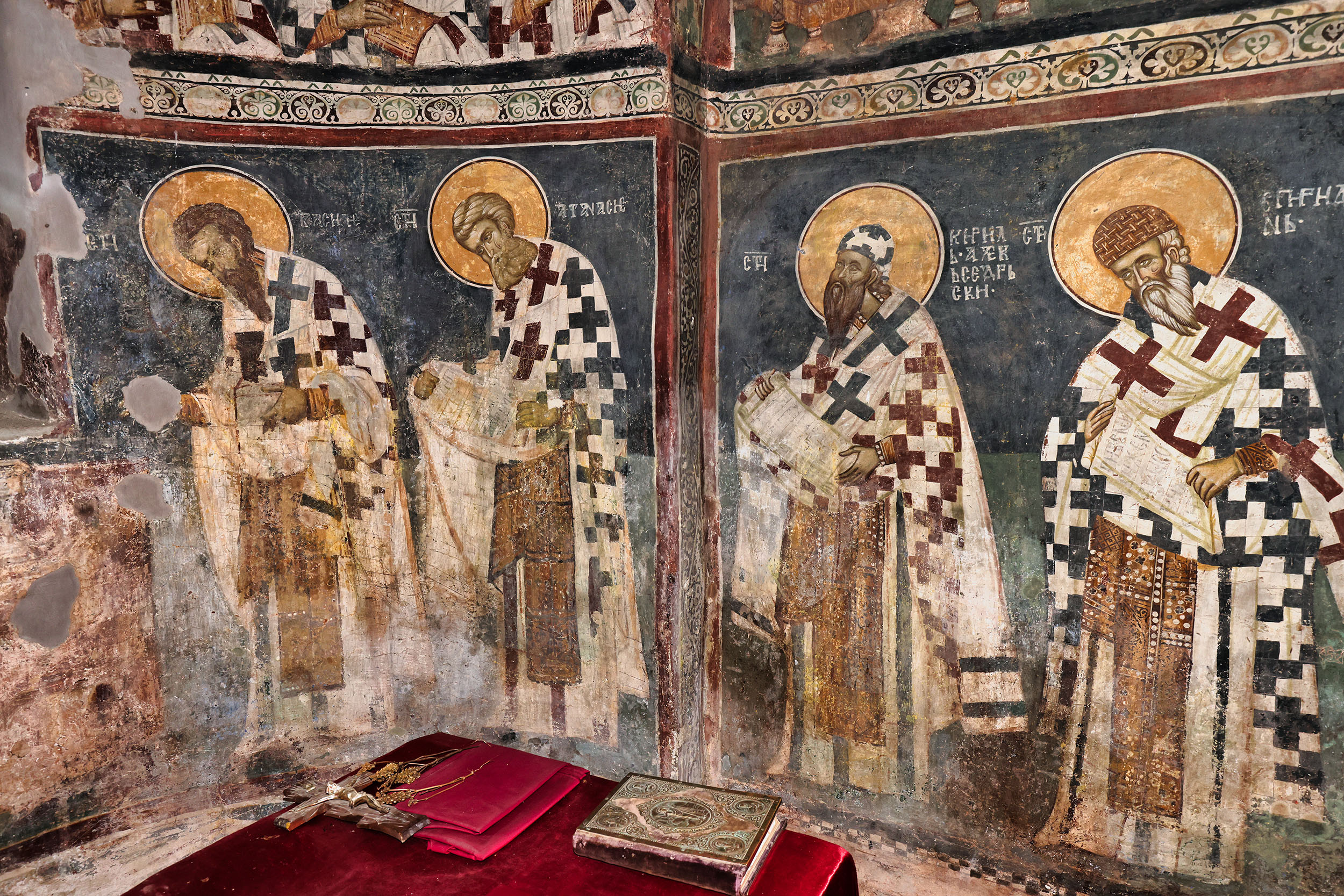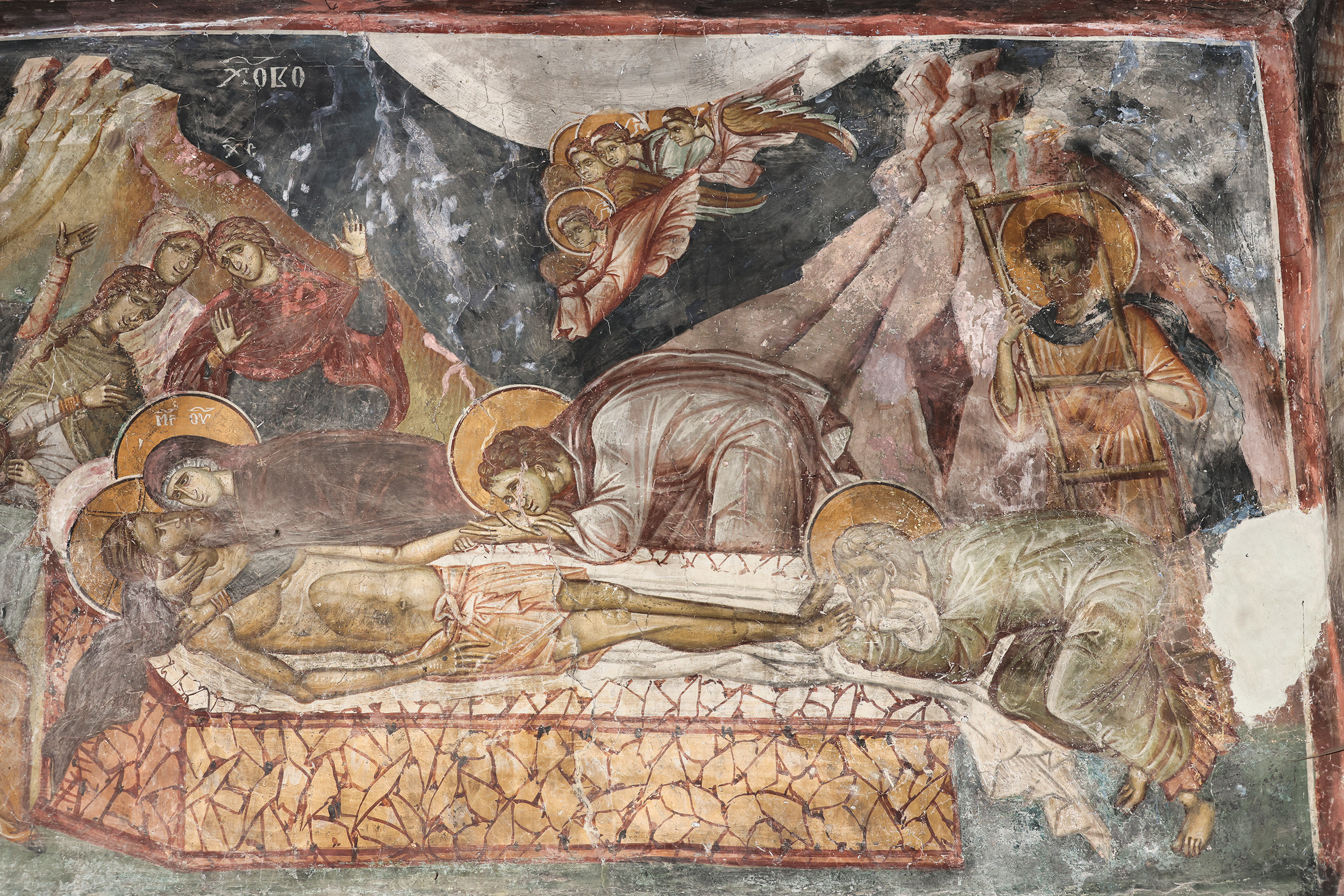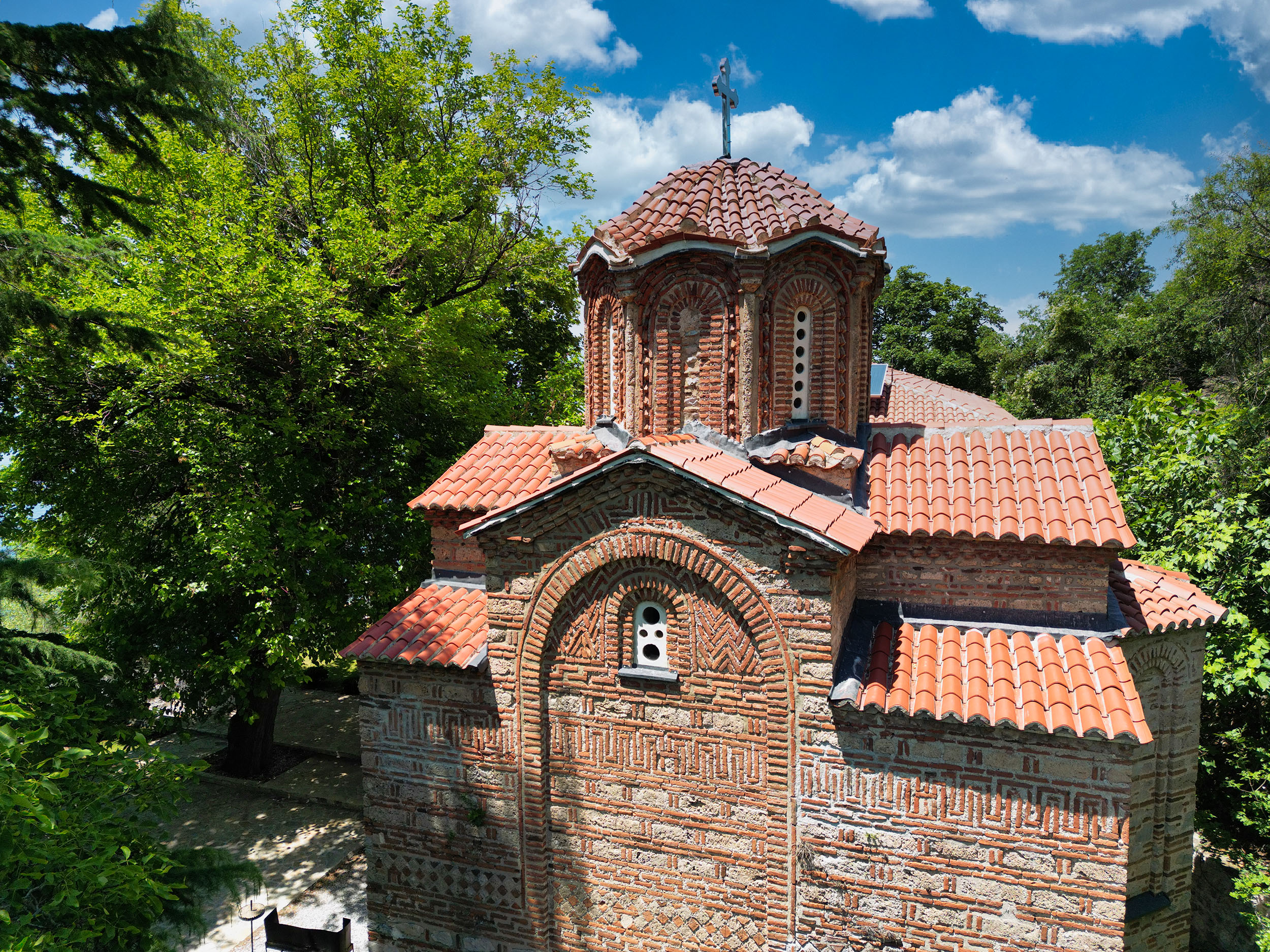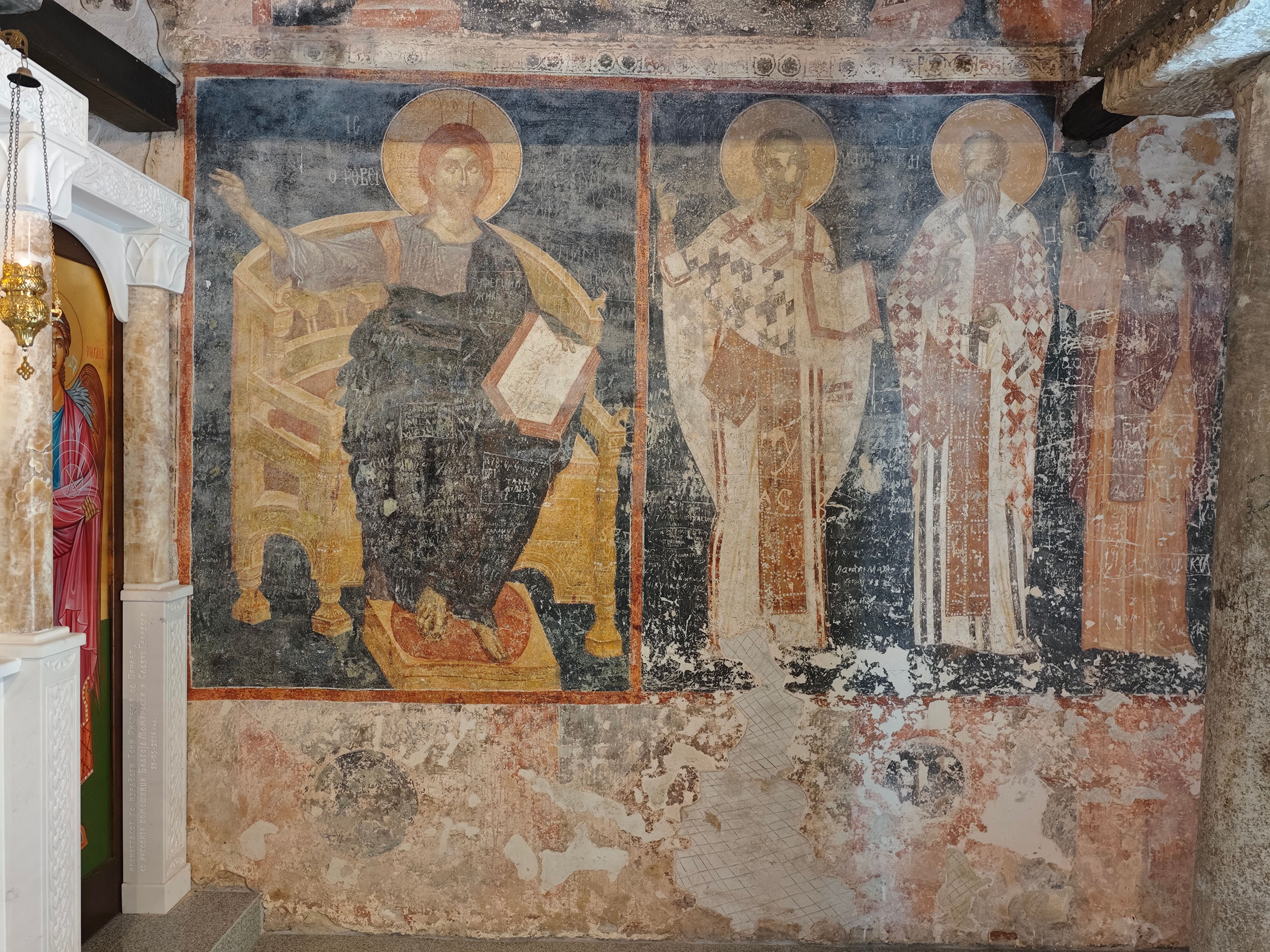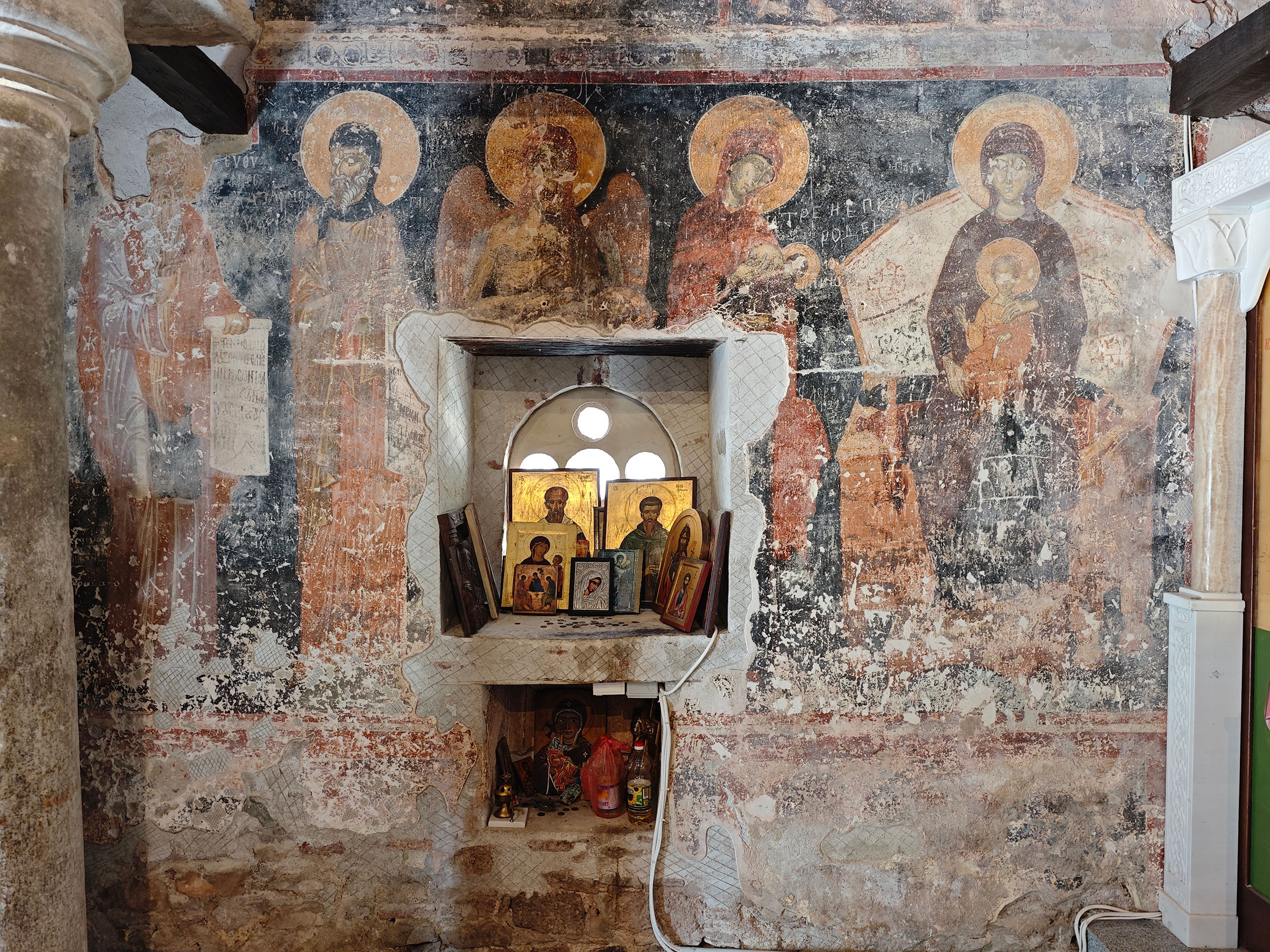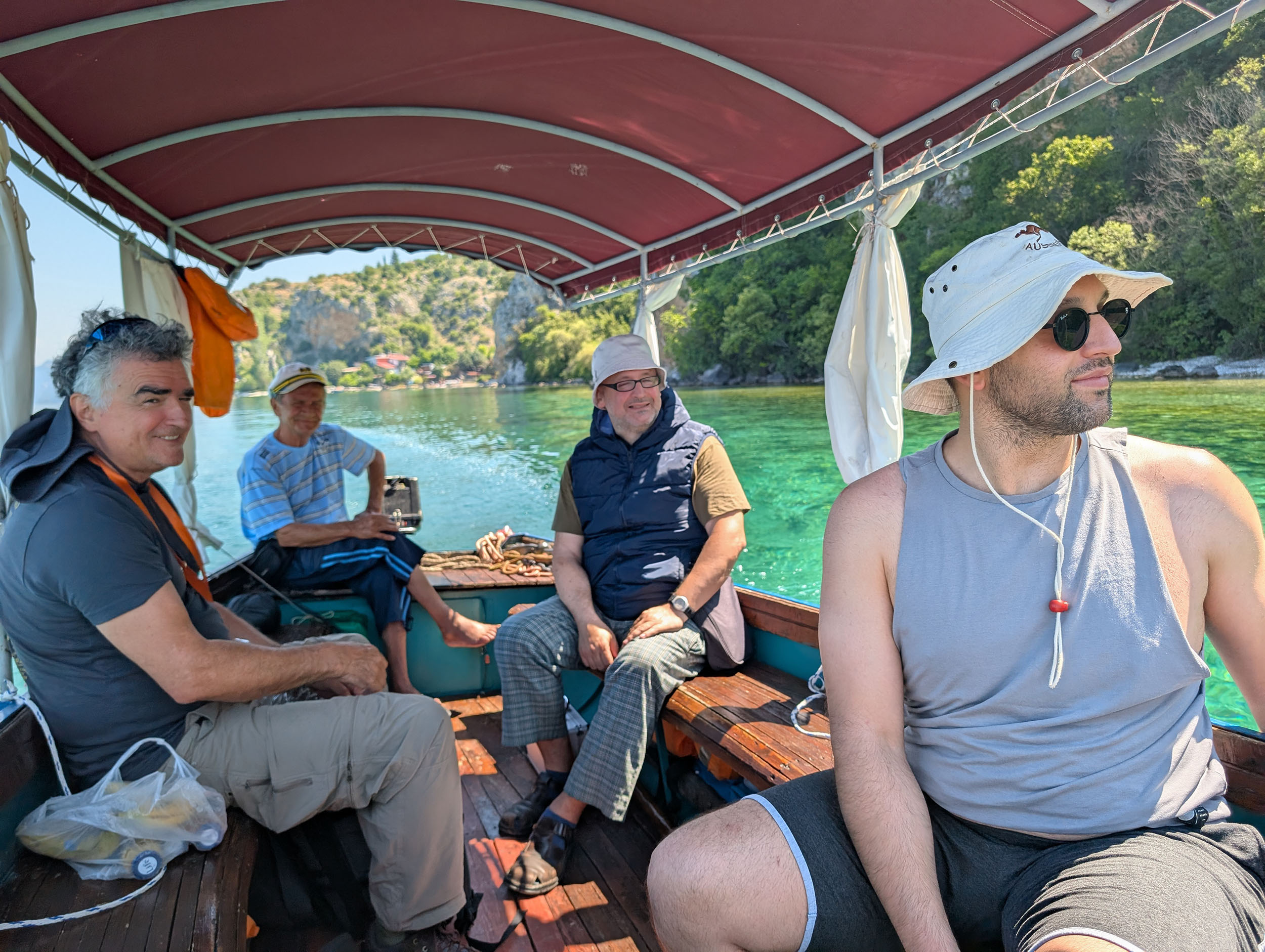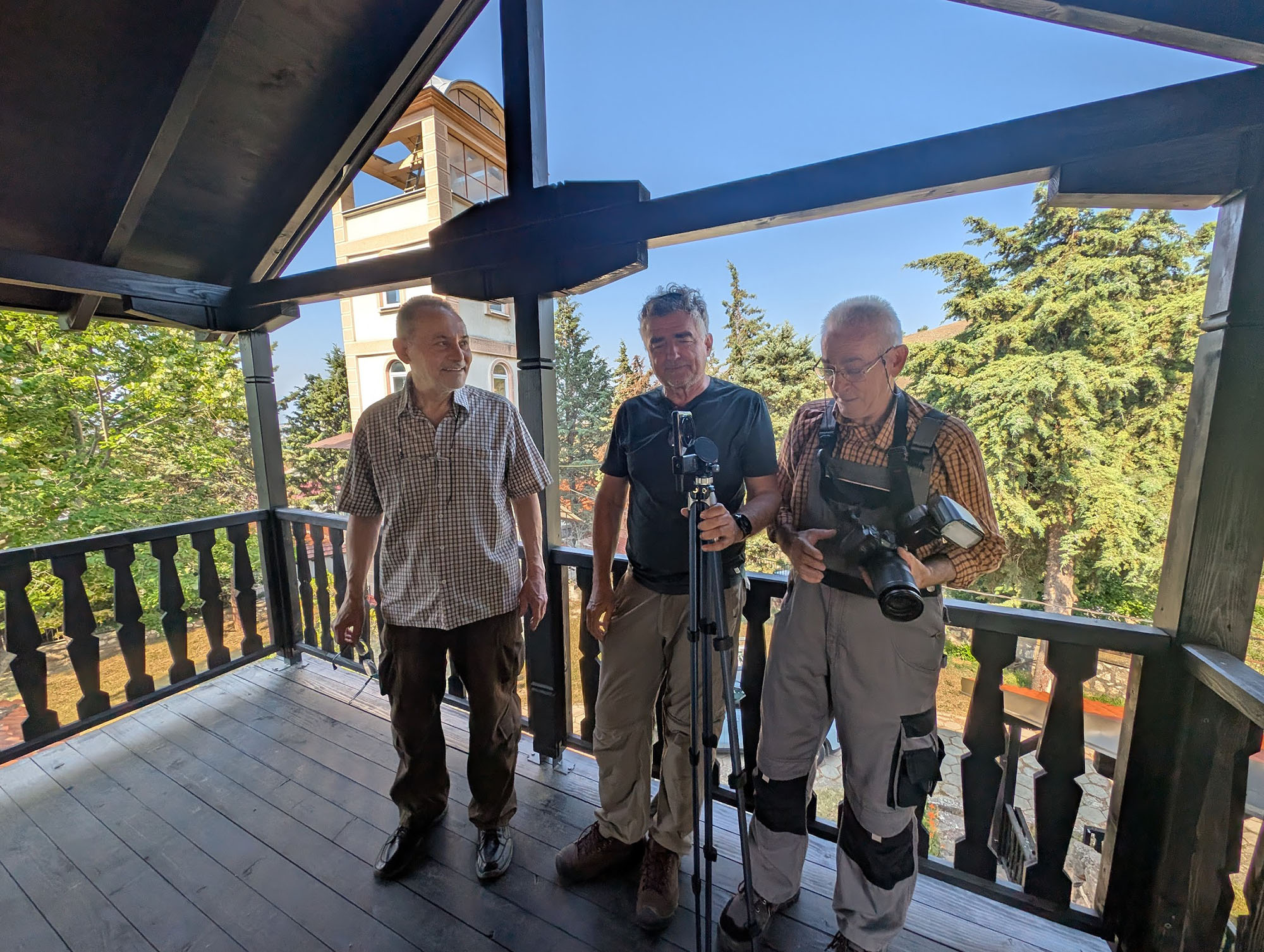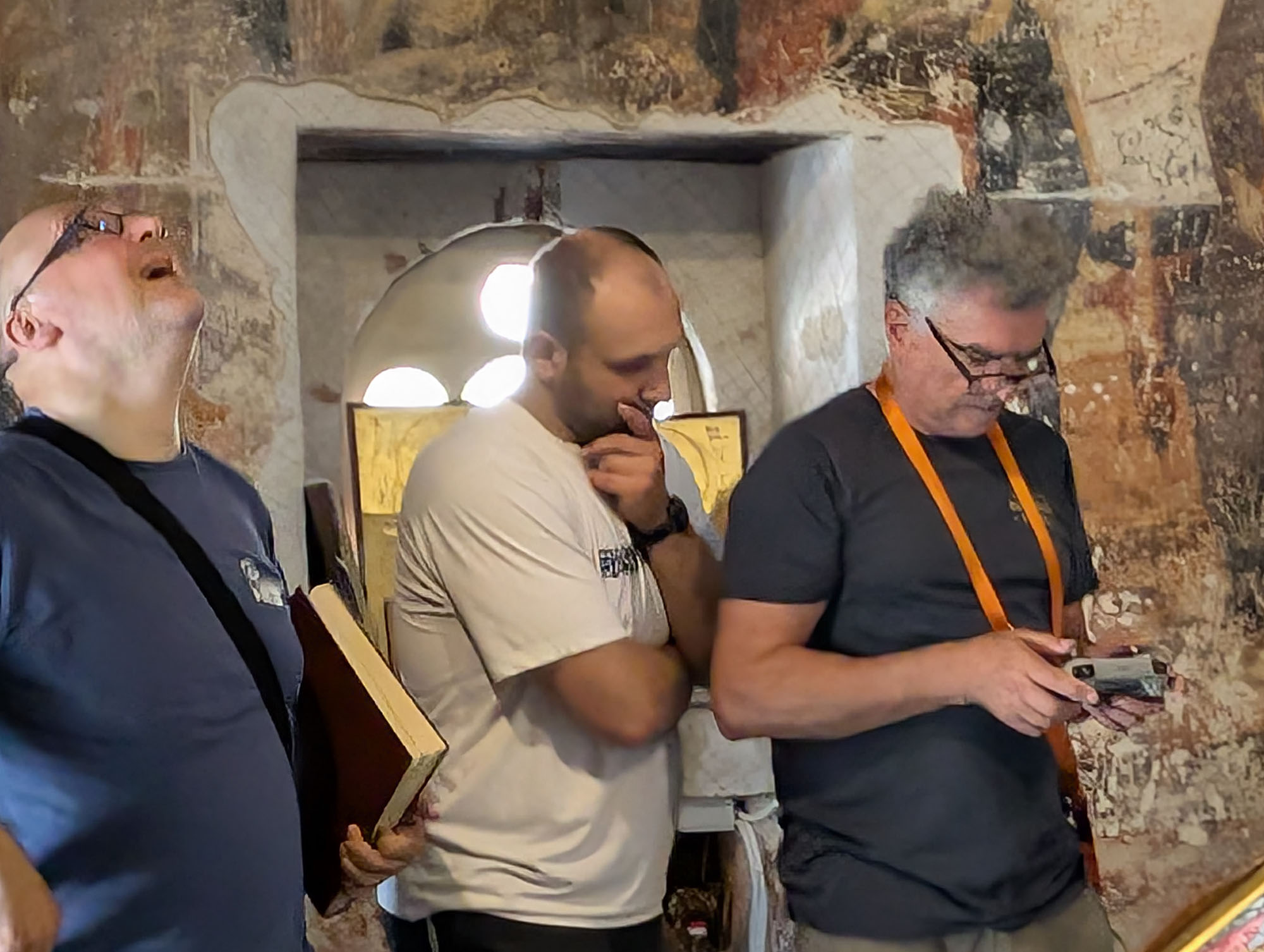Archiving the Sacred: BLAGO Fund’s 2025 Journey Through Macedonia
Archiving the Sacred: BLAGO Fund’s 2025 Journey Through Macedonia
Staro Nagoričane: Church of St. George
Our journey began in the church of St. George in Staro Nagoričane, near Kumanovo. Initially built in the 11th century, probably by Byzantine Emperor Romanus IV Diogenes, the church was later reconstructed by Serbian King Stefan Uroš II Milutin between 1312 and 1318. Milutin's reign was characterized by his orientation towards Byzantium, military successes, and exceptional founding activity, resulting in over forty endowments throughout the Balkans and the Holy Land.
The architect aimed for a solution with five domes, drawing inspiration from the Byzantine architecture of the time, especially successful examples in Thessaloniki such as St. Catherine and the Holy Apostles. The design also shows the significant influence of the Church of Our Lady of Ljeviska in Prizren. The base of the church is in the form of an inscribed cross, crowned with five domes. The lower structure retains the massive sandstone blocks from the earlier basilica. At the same time, the upper zones feature alternating rows of brick and hewn stone, a hallmark of the Serbian-Byzantine style that dates back to the 14th century.
The painting of the church, created by the renowned Thessaloniki painter Mihailo Astrapa, is a masterpiece of the Palaeologus Renaissance. In the rich program, among others, are the Great Holidays, the cycle of Christ's life, the cycle of St. George, the Virgin, and the Calendar. In the founder’s composition, King Milutin and his wife, Queen Simonida, are depicted presenting the model of the church. Despite the restoration work in the narthex, we successfully recorded most of the church's frescoes, including the upper zones, using drones. The quiet environment and open access to the church contributed to our work being spiritually fulfilling and technically rewarding
We thank Metropolitan Grigori, whose support made this trip possible, and Mr. Adolfo, the guardian of the church, for his helpfulness and hospitality.
St Nikitas in Banjani
Our first stop was the Church of St. Nikitas in Banjane, which was built around 1300 by King Milutin. The plan features an inscribed cross with an almost square base, supported by one dome and four columns. An elegant Byzantine decoration, featuring a mix of blind arches and stone and brick louvres, characterizes the exterior.
Painter Mihajlo Astrapa painted the church in 1324, which remains well-preserved to this day and depicts the Great Feasts, Christ's Passion and Miracles, liturgical themes, and individual saints. During the 1484 renovation, the icon painters from Kastoria carefully followed the original program. In contrast, the dome was painted in the 19th century by the famous Debar painter Dicho Zograf, known for his expressive style.
Црква Светог Спаса у Кучевишту
The road took us further to the Church of the Holy Savior in Kučevište. It was built and painted during the 14th century. Soon after, a vestibule was added, where the aristocratic portraits of the founder are preserved together with the portraits of King Dušan and Queen Jelena. The building is an inscribed cross with one dome supported by free columns. The paintings of the nave and altar are well-preserved, almost wholly, and illustrate the Great Feasts and the Passion of Christ, as well as the Nativity and Presentation of the Virgin.
The hospitality in Kučevište was enormous. Klisar Rade and the locals warmly welcomed us, turning our work into a joint event. It was a reminder that our mission is not only archival - it connects the past and the present on the level of creativity and friendship.
Zaum: Church of Our Lady of Zahum
Our last stop was a short exploratory visit to the Church of Our Lady of Zahum in Zaum, which can only be reached by boat across the calm waters of Lake Ohrid. Built in 1299(?) and painted in 1361, the church was founded by nobleman Grgur and painted under the patronage of Bishop Grigori Devolski.
The church features a single dome that rests on four pillars, characterized by pronounced verticality and rich ceramic and plastic brick decoration. The frescoes, although damaged, reflect the refined narrative style of late Byzantine art, characterized by more intense colors and expressive figures. The representation of St. Anne nursing a child to the Virgin Mary stands out as a gentle and intimate depiction of divine motherhood.
AT THE END
This year's expedition was more than a technical endeavor - it was a pilgrimage. Every church, every fresco, every conversation added a thread to the tapestry of Orthodox heritage that we strive to preserve. As we begin the process of cataloging and publishing the recorded material, we carry with us not only images and data, but memories of quiet mornings, warm welcomes, trust, and love that knows no bounds.
More Information
BLAGO Content
While the content of the BLAGO Fund collections is free to use, there are also some restrictions on commercial use and proper attribution of the material. Follow the links below for more information.
> BLAGO Collections License
> Image Request
BLAGO Fund also accepts the contribution of material. Please contact us with any material you wish to publish on our website.
Contact
BLAGO Fund, Inc.
PO Box 60524
Palo Alto, CA 94306
USA
info@blagofund.org


